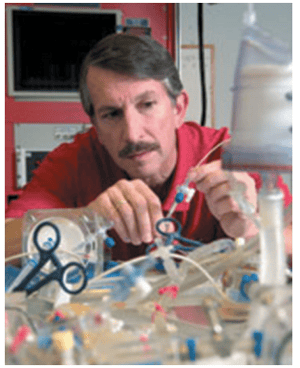What Bioengineers Should Know About Mock Circulatory Loops
Mock Circulatory Loops are mechanical representations of the human cardiovascular system and serve as a platform for testing the proof of concept for a device. Proof of principle is then demonstrated via in-vivo animal testing before proceeding with the clinical testing of the device itself.
Mock Circulatory Loops are made of tubing flow channels, compliance chambers and a pump that mimics the arterial and/or venous circulatory system. Circulatory models  simulate pressure/resistance changes within a physical system which then can be monitored with flow and pressure sensors.
simulate pressure/resistance changes within a physical system which then can be monitored with flow and pressure sensors.
The real-time monitoring of flow in the loop gives hands-on feedback to manipulations of the cardiovascular system without the need to use animal subjects.
Mock Circulatory Loops can also be used as a safe and low-cost training platform for clinical students. Students can learn about normal and abnormal conditions of cardiovascular hemodynamic function without having to use in vivo models.
Dr. George Pantalos and his team at the University of Louisville developed one of the first most widely cited mock circulatory loops, which uses a four-chamber design to evaluate left ventricle and ventricular assist device function.
Learn more about Mock Circulatory Loops, their in-vitro bench simulation uses, in-vitro bench testing and more in this guide.



